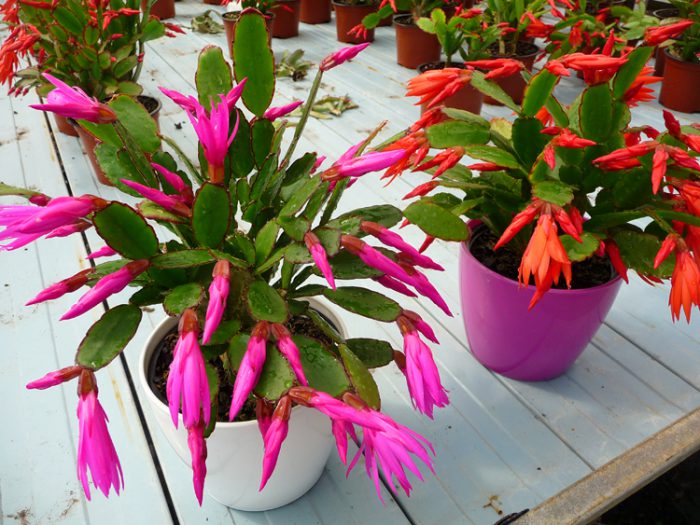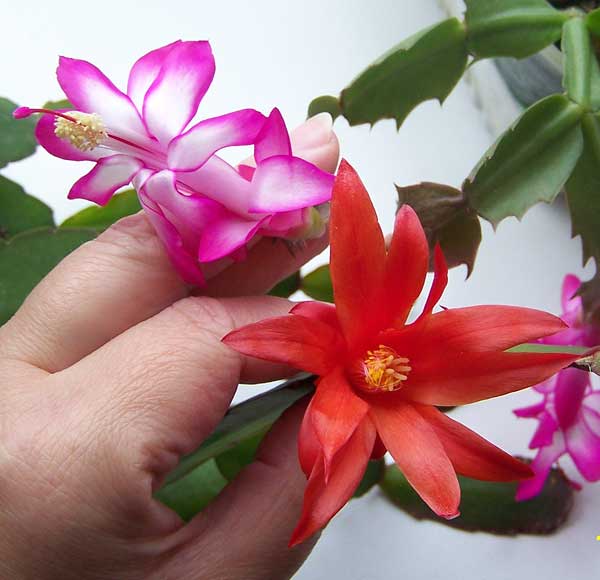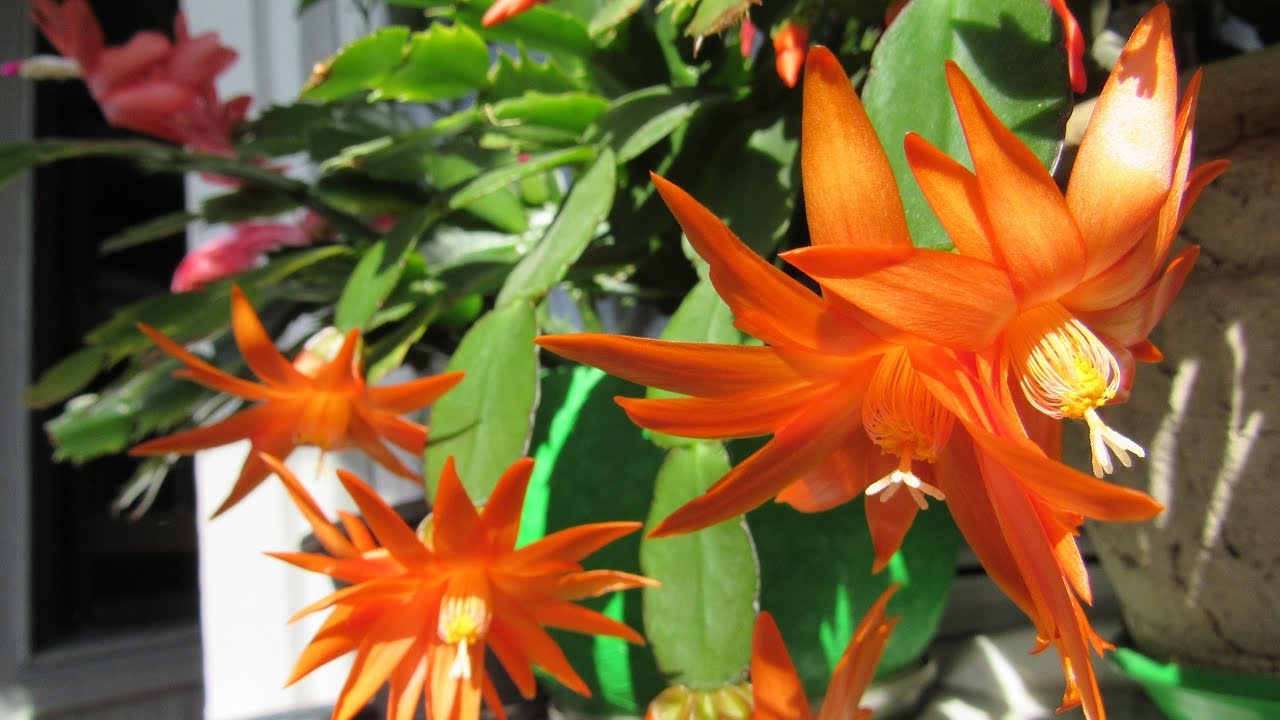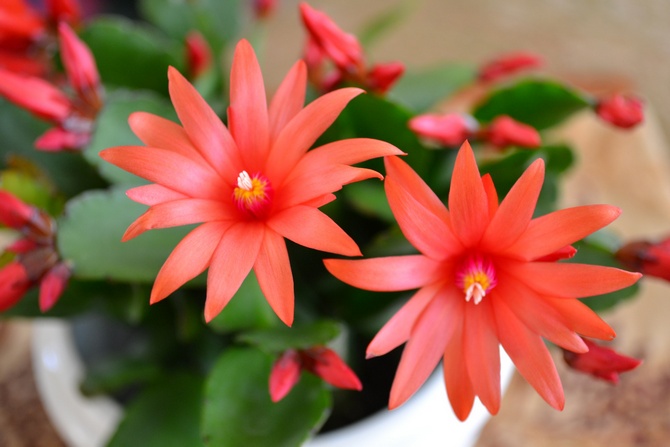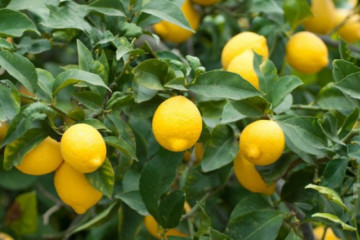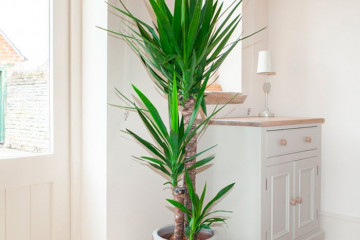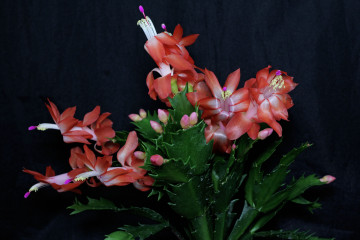Rhipsalidopsis: home care and plant varieties
Content:
The cactus plant Ripsalidopsis, which requires special knowledge to take care of at home, takes center stage in indoor gardens. Cultivated actively by lovers of unusual and exotic flowers. It grows in tropical climates. Loves moisture and shady places.
Visually represents a bush. It has several shoots, each of which is additionally divided into 4-6 segments. Feature - the color of the shoots can be green or red. They have thorns - 1-2 pieces per shoot. Active flowering lasts 2 months. Formed by 2-3 bright flowers.
The main types of ripsalidopsis
Experts in exotic flora distinguish the following types of plants:
- Rhipsalidopsis Gartner;
- Rhipsalidopsis pink (delicate color);
- Rhipsalidopsis is white.
These are the most popular varieties among florists.
Rhipsalidopsis Gartner
Ripsalidopsis Gartner's flower grows in Brazilian forests. Features:
- stems are smooth;
- divided into several segments (3-4 pieces);
- each segment can reach a length of 7-8 cm;
- shoot length - 20-25 cm (with good and high-quality care);
- the stems are dark green with gloss.
Rhipsalidopsis pink
The succulent Ripsalidopsis pink is a dwarf shrub. Features of the plant:
- stems are green;
- shoots are flat, ribbed;
- there are jagged edges;
- changes in the shade of the shoots depending on the intensity of the illumination;
- pink flowers without blotches of other shades;
- diameter reaches 5 cm;
- bell-shaped flower shape;
- pointed petals.
These plants are grown actively, despite the existing beliefs that men in the family begin to lead an idle lifestyle. The popular name of the flower is "dancing skeleton" or "drunkard's dream." They are associated with the shape of the stems. They visually resemble the shape of a bottle of alcohol.
Also the cactus is called "Easter flower". It creates a positive energy inside the house or premises where it is grown. It is believed to protect against negative emotions. If the care is carried out according to all the rules, then positive energy prevails.
Rhipsalidopsis white
The white cactus Ripsalidopsis was obtained from the species of Gartner. Visually, the plant is a low bush. The maximum height is 30 cm. Shoot segments are of medium length - about 6-8 cm. They have rounded projections. Each of the segments is dense and thick.
During flowering, large flowers are formed. Their color is deep white. The flowering time is about 1 month. One plant can form 10-12 flowers.
Ripsalidopsis care at home
Ripsalidopsis flower will bloom profusely and demonstrate visual beauty under favorable conditions. In the process of leaving, growers should take into account the following parameters:
- room temperature;
- lighting intensity;
- soil condition;
- the frequency of feeding (and whether they are necessary);
- features of the transplant.
All steps must be completed in a timely manner.
Room temperature and lighting
Succulent Ripsalidopsis home care, which must take into account the origin of the plant, does not like prolonged exposure to direct sunlight. At the same time, the room temperature is important.
Key indicators to consider:
- in summer and spring, for comfortable conditions, temperature values of 18-20 degrees are required;
- prolonged heat for a succulent is destructive;
- from air conditioners and other devices for creating a microclimate in an apartment, the plant must be removed a considerable distance;
- in the first weeks of autumn, it is recommended to reduce the temperature to 10-12 degrees;
- in houses and apartments, it is necessary to take out containers to a loggia or balcony to regulate the growing season.
The dormant period for the cactus is October - February. It is recommended to maintain indicators in the range of 12-15 degrees during these months. This is necessary to ensure abundant flowering and powerful shoots for the next year.
With regard to lighting, the florist should take into account the following recommendations:
- exclude direct sunlight;
- put pots on east or west windows;
- create a shade in the daytime (cover the window with a light cloth or use a paper screen).
If the container is placed on a northern windowsill, then for a sufficient amount of light, it is recommended to turn the pot in different directions during the day to the largest light source. In this case, the flowering will be moderate. You need to continue turning the plant until the buds appear.
Soil and top dressing
Ripsalidopsis will bloom beautifully and not hurt if you feed and change the soil in a timely manner. Ripsalidopsis plant, its growth and reproduction at home depend on the condition of the soil and the timely introduction of dressings. In order to care properly, it is recommended to choose a ready-made soil composition.
The acidity of the substrate is mandatory. Optimal pH values are 5.5-6. The soil should be loose in order to increase the amount of moisture and air entering. The composition should also contain large lumps of organic matter.
To improve the quality of the composition, it is recommended to add a little charcoal powder, zeolite or small brick chips. All components must be thoroughly mixed together. To regulate acidity, a little superphosphate should be added to the soil.
Top dressing is essential to maintain the health and strength of the plant. This exotic species requires formulations with little nitrogen. Its increased content leads to decay of the root system. According to the indicators, the composition of dressings should be in%:
- nitrogen - 9;
- phosphorus - 18;
- potassium - 24.
The time of the first dressings is in the spring (growing season). The last time to feed the cactus should be in the fall (before the dormant period in October). In the summer, you need to supplement the composition of the soil 2-3 times. In winter, feeding is not carried out. Cutting off the stems is not required until the plant reaches 4 years of age.
Transplant features
The Ripsalidopsis cactus suggests that the care will be carried out using transplants and circumcisions. It is recommended to transplant at the moment when the plant begins its budding period. If this time is missed, then you can transplant after the end of flowering.
It must be carefully freed from the old soil. The new pot should contain soil and some fertilizer. After transplanting, sprinkle the plant on top with a small amount of substrate.
Reproduction methods at home
Ripsalidopsis mix cactus and other species can be propagated in 3 ways:
- seeds;
- cuttings;
- vaccination.
Succulent Ripsalidopsis is an orange species and other varieties are easier to propagate by cuttings if the grower is a beginner. The seeds will take longer to produce beautiful flowers. If propagation by cuttings is chosen, then it is best for the plant to have young shoots. The same method can be used to propagate Ripsalidopsis of the red variety.
